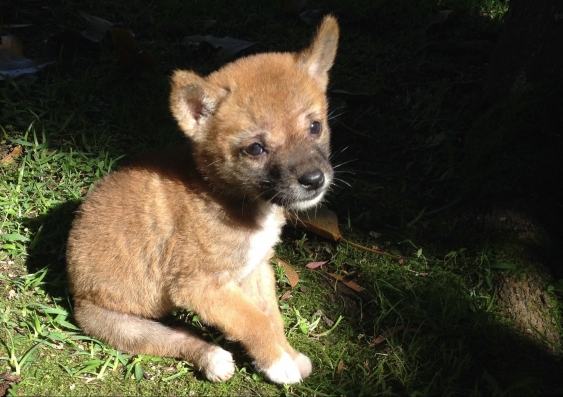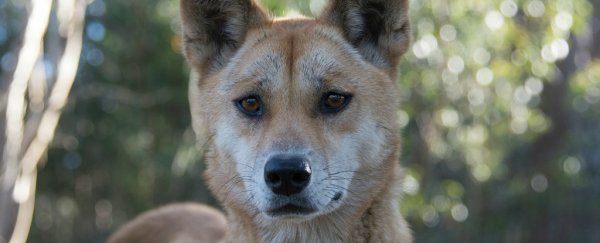The winner of the World's Most Interesting Genome competition has been announced – and a pure bred dingo called Sandy has ended up on top.
The competition was tough, with Sandy beating a 'solar-powered' sea slug, an explosive beetle, and a deadly Asian snake to take out the top spot.
Sandy and her siblings were found as abandoned three-week old pups in the Australian desert, two years ago.
 Barry Eggleton
Barry Eggleton
Being a wild-born pure Australian desert dingo is a pretty big deal – most dingos have interbred with wild dogs and domestic dogs, so it makes Sandy rare.
"Sandy is truly a gift to science. As a rare, wild-born pure dingo, she provides a unique case study," said project leader Bill Ballard, from the University of New South Wales (UNSW).
"Pure dingoes are intermediate between wild wolves and domestic dogs, with a range of non-domesticated traits."
"So sequencing Sandy's genome will help pinpoint some of the genes for temperament and behaviour that underlie the transition from wild animals to perfect pets," he added.
Let's take a look at the rest of the finalists:
Elysia timida the "solar-powered" sea slug
 Parent Géry/Wikimedia
Parent Géry/Wikimedia
Elysia timida is a sea slug that can 'steal' and use the chloroplasts of the algae it consumes as food.
Chloroplasts are the parts of plants that undergo photosynthesis – a process that takes light and turns it into energy.
Currently scientists don't understand how the slugs maintain chloroplasts typically only used by plants, but it allows them to survive for months without eating.
Nesoenas mayeri, the Pink Pigeon
The pink pigeon is interesting for more than just its colour.
As a species that nearly became extinct in the 1990's (having only 16 wild birds remaining), they managed to bounce back, with records showing there are now more than 400 individuals.
But the pink pigeon isn't out of the woods yet – with low genetic diversity, over 60 percent of baby birds dying due to infection, we need to understand as much as we can about these guys to make sure they don't end up like their dodo cousins.
Tropidolaemus wagleri the "sexually dimorphic" Temple Pit Viper
The temple pit viper is pretty badass.
Not only does it have unique toxins in its venom not found anywhere else in the world, but its sexual characteristics also is quite different to most snake species.
Temple pit viper males are small and green, while the females are 10 times the male's size and beautifully coloured.
Plus you can find these vipers in the Snake Temple in Malaysia, which is one of the only temples of its kind in the whole world.
Brachinus elongatulus the "explosive" bombardier beetle
The bombardier beetle is basically the mad scientist of the bug world.
With explosive chargers of toxic chemicals that explode out of the bug at temperatures over 100 degrees Celsius (212 degrees Fahrenheit) they can definitely hold their own in a fight.
It also doesn't seem to hurt itself in the process.
The beetle itself has been baffling evolutionary geneticists for decades with how such a creature managed to evolve at all. One evolutionary slip-up and the bug itself would explode.
It's totally worth checking out this video below to find out more:
But despite all this notable wildlife, we're excited that Sandy came first.
The company behind the competition, PacBio, will now sequence the DNA with their extremely precise machine to investigate the secrets of Sandy's genome.
We're looking forward to seeing what the UNSW team discovers.
UNSW Science is a sponsor of ScienceAlert. Find out more about their world-leading research.
